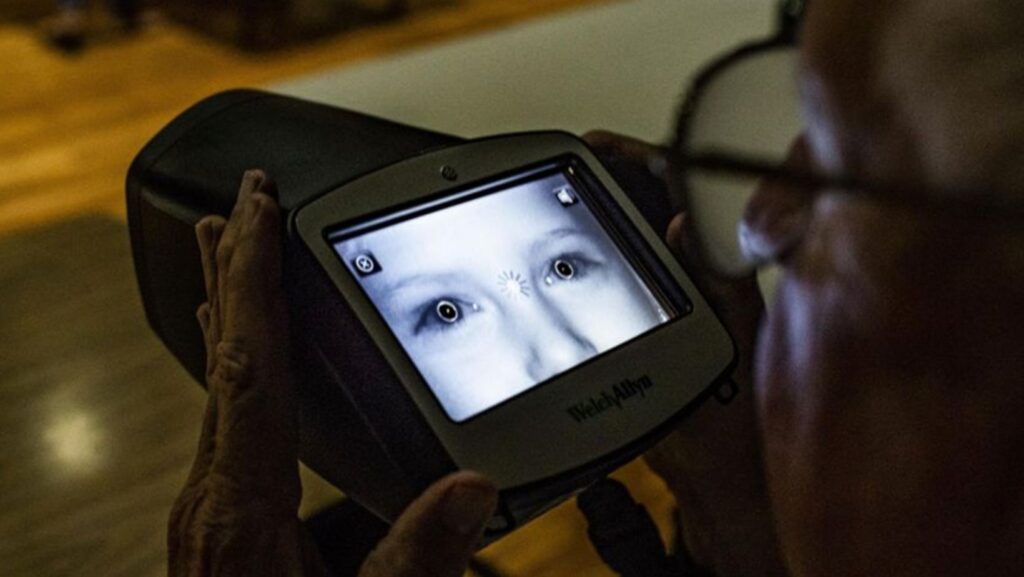Healthcare requires essential diagnosis-related tools to enhance operational speed and accuracy in clinical environments. Primary care clinics along with pediatric practices and optometry offices now heavily rely on the vision screener tool for their daily operations.
Most people typically link vision screening activities to school-based and public health programs yet the hidden benefits for clinical practitioners greatly outweigh the perceived value of these programs.
A vision screener helps streamline clinical operations thus increasing patient care quality and enhancing your practice’s diagnostic abilities for early eye problem detection for every medical professional from general practice through pediatrics to eye specialists. Here’s how:
Enhancing Early Detection and Preventative Care
Doctors significantly benefit from vision screening equipment from Depisteo since it enables them to find visual impairments during their earliest stages. The appropriate tools are essential to monitor conditions like amblyopia, strabismus, refractive errors together with early cataracts because young children or patients who have trouble expressing their symptoms or are non-verbal frequently have problems with detection.
Doctors can use vision screeners for fast and non-harmful tests that expose potential problems before they become permanent vision impairments. The discovery of vision problems at an early stage allows healthcare providers to start treatment that produces better long-term results particularly for children undergoing prompt care enabling them to avoid permanent vision complications.
Early detection allows physicians to direct patients to specialists quickly and ideate patient-specific intervention plans or prescribe corrective approaches including glasses or therapy when patients might not realize assistance is needed.
Enhancing Clinical and Workflow Efficiency
A lot of the time, doctors have to work around busy plans to handle urgent cases, preventative care, and managing long-term conditions all in the same day. Traditional eye tests can take a lot of time, especially if patients have to give subjective answers or if they need to be coordinated with outside testing providers.
This process is easier with an eye screener. Most modern screeners offer objective tests that are done automatically and only take a few seconds for each subject. This means that doctors can easily add eye screening to regular physicals or checkups without making appointments take a lot longer.
When doctors have a device in their office, they don’t have to make extra appointments or send patients to other doctors just to do basic screenings. As a result, the practice is more efficient, there are fewer administrative tasks to do, and patients have a better experience altogether because they don’t have to make an extra trip for testing. Read more here https://pmc.ncbi.nlm.nih.gov/articles/PMC4313496/.
Assisting with Diagnosis Based on Evidence
These days, vision screeners often come with high-tech apps and tools for reporting data, which give accurate, detailed metrics. This takes the guesswork out of simple eye tests and gives a more accurate diagnosis.

This means more than just “pass or fail” for doctors. Detailed data helps doctors make decisions by giving them proof that can be measured. If a patient needs to be sent to an optometrist or ophthalmologist, the vision screener results provide a solid base for that recommendation. It also helps doctors talk to each other better and coordinates all of a patient’s care.
With more and more focus on data-driven healthcare, making digital test results easy to access is in line with modern medical record-keeping methods and makes it easier to document for insurance, compliance, or follow-up care.
Improved Patient Trust and Compliance
Patients are more likely to follow treatment suggestions if they know why those suggestions were made. Vision screeners help doctors make it clear to patients that they need corrective care, especially when the results are clear, quick, and easy to explain.
This is very helpful when caring for kids. Kids with eye problems often don’t know it, and their parents might not believe they need glasses or more tests. Using a vision screener, doctors may provide parents with up-to-the-minute data and a comprehensive explanation of the results. This helps parents understand the importance of following up with the recommended steps.

Vision screeners are a powerful way to remind adult patients, especially those with long-term diseases like diabetes or high blood pressure, how these conditions can affect eye health. This makes them more likely to take a more active part in managing their health. Find out more here.
Versatility Across Specialties
Vision screeners are not only useful for eye care professionals. Primary care physicians, pediatricians, neurologists, endocrinologists, and even occupational health providers can all benefit from integrating vision screening into their routine assessments.
In pediatrics, screeners help meet developmental screening standards and school readiness requirements. In general practice, they support preventive care goals and help manage risks associated with chronic illness. For neurologists, vision screening can provide clues to neurological deficits, especially after events like strokes or concussions.
The versatility of vision screeners makes them a smart investment for multidisciplinary practices aiming to provide comprehensive, integrated care.
